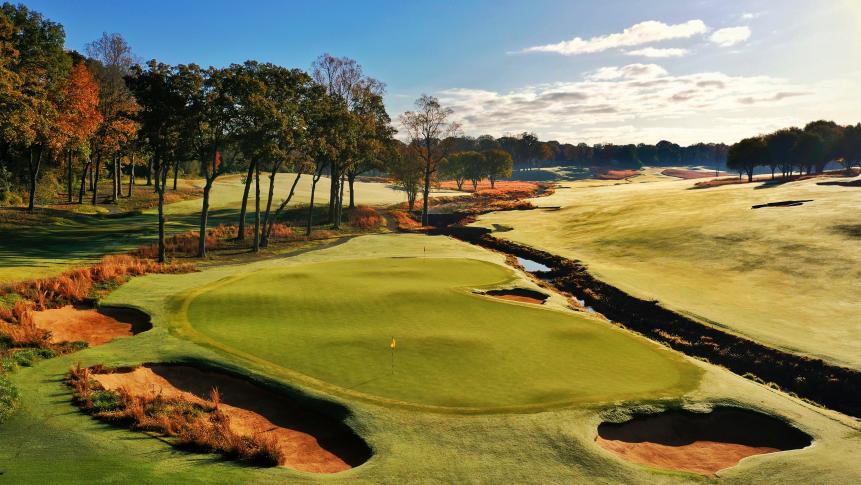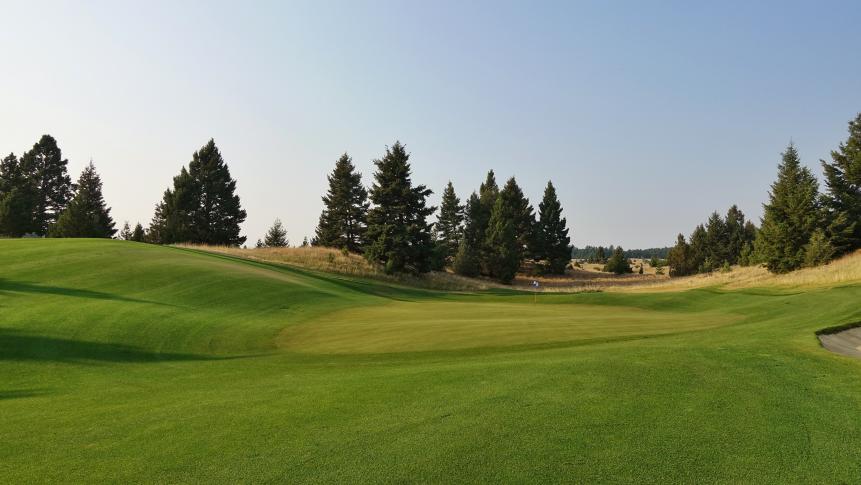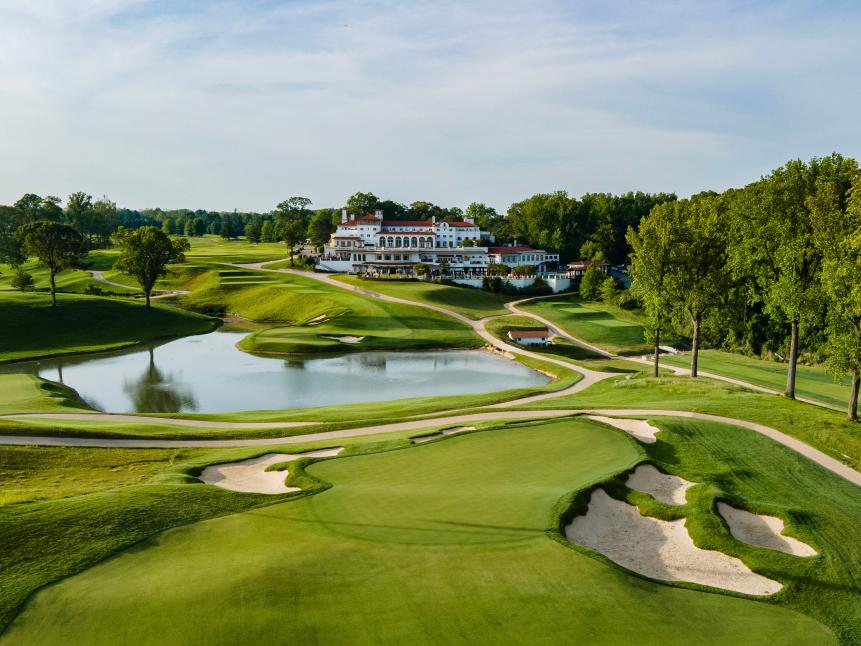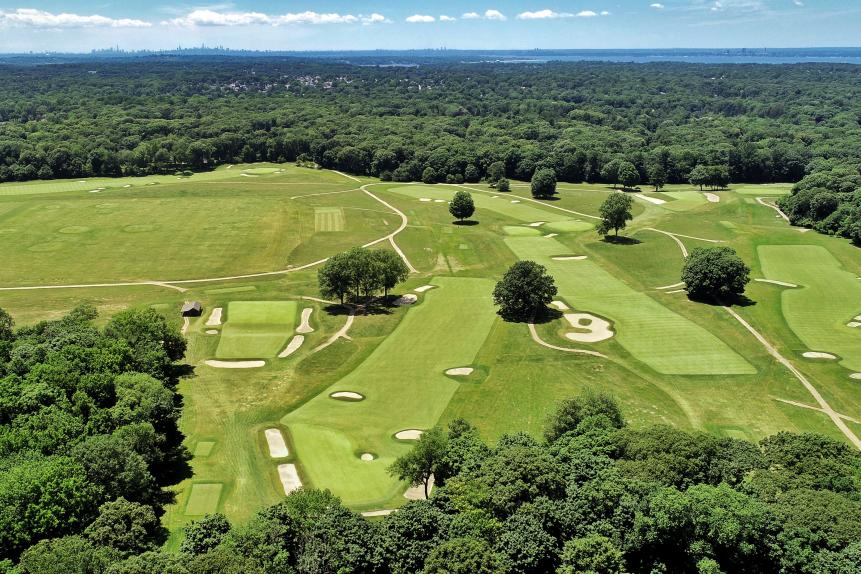New List
These courses were the biggest movers (up and down) in our new rankings
In any ranking grounded in statistical calculations, like our America’s 100 Greatest and Second 100 Greatest lists, the balance between continuity and change is essential. In our biennial ranking—the result of more than 80,000 evaluations submitted by our 1,900-plus panelists—the architecture of our country’s greatest courses is rewarded, and tracking which venues have made the biggest moves reveals which course-design trends might be worth following. Though huge ebbs and flows are rare in our rankings due to us collecting data over a rolling 10-year period, this year we used a curve to weigh recent ratings more heavily to more accurately reflect a course’s current architecture—and the result was some bigger moves than usual.
The biggest move in our 2023-2024 ranking—aside from debuts from Ohoopee Match Club and Nanea Golf Club—is Old Town Club, a Perry Maxwell design in Winston Salem, N.C., which rockets 38 spots to No. 54. This continues an upward trend for the club, which first entered Golf Digest's 100 Greatest ranking in 2019-2020 after a 2013 renovation by Bill Coore and Ben Crenshaw reinvigorated the 1939 design. Subsequent fine-tuning by the club and Dave Axland has helped it rise further.
Equally interesting to some will be the courses that took a tumble during this latest cycle. Most notable among them is Pebble Beach, which slipped four spots to No. 12, falling out of the top 10 for the first time in the history of our rankings, dating back to the 1960s. Medinah’s No. 3 course (down 33 spots to No. 93), Butler National (down 26 spots to No. 75), Interlachen (down 25 spots to No. 84), Winged Foot’s East course (down 20 spots to No. 61), Baltusrol’s Upper course (down 17 spots to No. 80), and Bandon Dunes’ Old Macdonald (down 16 spots to No. 72) all took significant hits this cycle. It's worth noting that Interlachen, Medinah No. 3 and Baltusrol (Upper) will begin significant renovations this year.
The courses in this collection of biggest upward movers, however, show that a rebound is possible in future editions. We’ve included the 15 courses on our America’s 100 Greatest that made the largest improvements, as well as the 10 courses on our Second 100 Greatest that made the biggest jumps. Click to expand each course page to learn more about the design, read experts’ opinions and check out the complete course-ranking scores in each category.
100 Greatest Biggest Upward Movers
Old Town Club (38 spots to No. 54)

California Golf Club (30 spots to No. 71)

Rock Creek Cattle Company (25 spots to No. 56)

Shooting Star Golf Club (25 spots to No. 98)

Myopia Hunt Club (19 spots to No. 50)

Congressional Country Club: Blue (18 spots to No. 73)

Maidstone Club: West (12 spots to No. 52)

Piping Rock Club (12 spots to No. 97)

TPC Sawgrass: Stadium (11 spots to No. 41)

Diamond Creek (9 spots to No. 77)

Ballyneal G.C. (8 spots to No. 36)

Scioto C.C. (8 spots to No. 60)

Inverness Club (7 spots to No. 58)

Valhalla G.C. (6 spots to No. 87)

Peachtree G.C. (5 spots to No. 25)

Cherry Hills C.C. (5 spots to No. 68)

Calusa Pines G.C. (5 spots to No. 69)

Second 100 Greatest Biggest Upward Movers
Moraine C.C. (31 spots to No. 146)

Southern Highlands G.C. (30 spots to No. 161)

Eastward Ho! (26 spots to No. 102)

Shelter Harbor G.C. (14 spots to No. 156)

Glenwild G.C. & Spa (14 spots to No. 168)

Whisper Rock G.C.: Upper Course (13 spots to No. 143)
%20-%2012th%20hole%20-%20courtesy%20of%20the%20club.jpg.rend.hgtvcom.861.431.suffix/1573162816013.jpeg)
Kingsley Club (11 spots to No. 110)

Newport C.C. (11 spots to No. 126)

Martis Camp (11 spots to No. 134)

Robert Trent Jones G.C. (10 spots to No. 120)

St. Louis C.C. (10 spots to No. 128)

• • •
Explore Golf Digest's recently relaunched Places to Play community, where you can add star ratings and reviews for all the courses you play. We've collected tens of thousands of reviews from our course-ranking panelists to deliver a premium experience, which includes experts' opinions, bonus course photography and videos, plus much more. Check it out here!